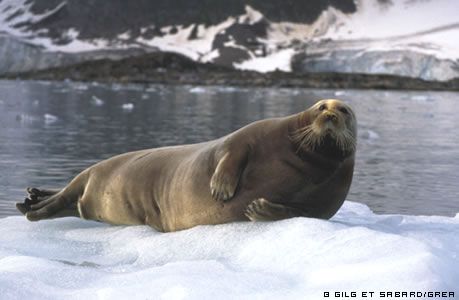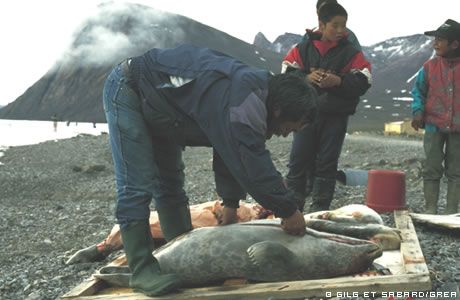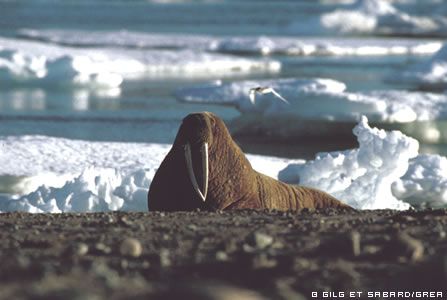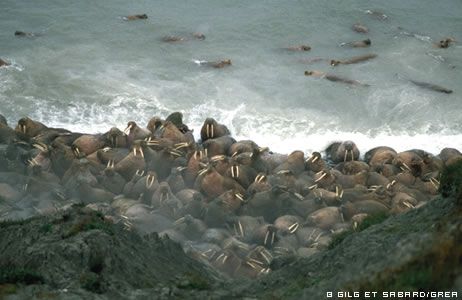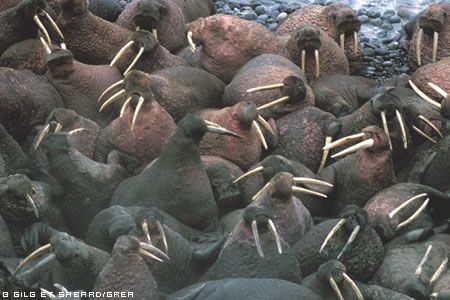Polar Encyclopædia
SEALS AND WALRUSES
AMPHIBIAN MAMMALS
Walruses, seals and sea lions (otaries) are carnivorous marine mammals. Like their cousins found in Antarctica, they belong to the order of Pinnipedia (“feet like flippers”). They are perfectly amphibian and are just as at home in the water (flippers, streamlined shape, food mainly fish molluscs and crustaceans) as on land (lungs, birth in the open air).

SEALS AND SEA LIONS
In the Arctic Ocean live several species of seals (bearded seal, ringed seal, etc.) and sea lions (Steller sea lion, fur seal). To avoid confusing them, remember that only sea lions have visible ears and fold their back "legs" to walk on land; seals crawl on the ground. Orcas and polar bears are their natural predators.

THE WALRUS, SENTINEL OF THE ARCTIC
The walrus is a large potbellied (they can weight up to 1,200 kg) mammal with huge tusk teeth (evolved from canines) that lives in herds along the edge of the Arctic. It has very stiff “tactile” whiskers around its muzzle. The walrus digs around on the sea bed with its tusks, stirring up molluscs that it crunches before sucking them up. Walruses also occasionally eat seals.
A NEW THREAT: POLLUTION
Many Inuit depend almost entirely on seals for their livelihood. Theirs is a seal-based civilisation: seals provide their food, clothes, tools, etc., but they husband local seal stocks. On the other hand, certain species of pinniped have been decimated by hunters coming to the Deep North to exploit them for oil and furs. And today they face a new, and more insidious threat: the chemical waste from human activities is accumulating in their body fat.
Support the project with a donation
The Polar POD expedition is one of the stamp of the pioners, a human adventure coupled with a technological challenge, an oceanographic exploration never before carried out which will mark a milestone in the discovery of the oceans.
Thank you for your support !
